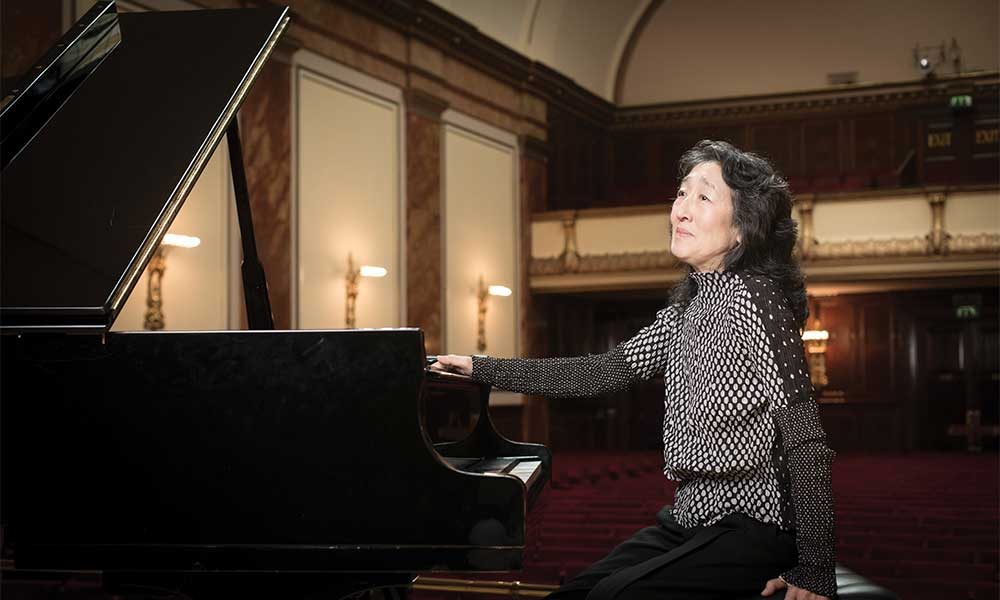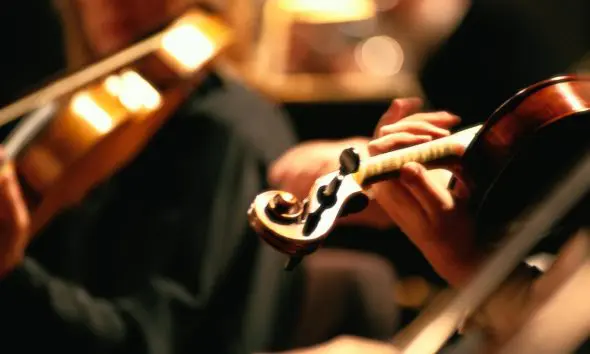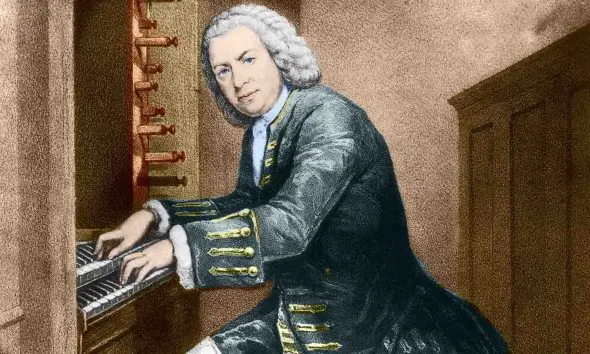Best Solo Piano Pieces: Greatest Top 10
Discover our selection of the top 10 best classical solo piano pieces by composers including Bach, Beethoven, Chopin, and Debussy.

The piano repertoire is the largest of any instrument save the voice. With millions of works to choose from, where do you start? Whether you’re a listener, a learner, or a fully-fledged performer, scroll down to discover our selection of the best solo piano pieces ever composed.
Listen to Piano Masters on Apple Music and Spotify.
The piano repertoire often feels limitless in its size and scope. Consider the range: from Bach’s great contrapuntal keyboard works to the visionary cycles of Messiaen; from Beethoven and Schubert’s greatest sonatas to the boundary-busting achievements of the finest 20th-century composers; the world of the pianist-composers Chopin, Liszt, Rachmaninov and Scriabin; the possibilities feel endless. Therefore, we ask you please to treat this list not as a definitive assembly, but rather as suggested starting points for explorating the most beautiful piano pieces.
You’ll notice major names that are missing, though – notably Mozart, Haydn, and Tchaikovsky. While their best solo piano pieces are undoubtedly rewarding, they are not necessarily representative of any of them at their greatest and are difficult to hold up in comparison with such works as Schumann’s Fantasie in C and Beethoven’s ‘Hammerklavier’ Sonata. And while as wide a range of composers as possible has been included in terms of era and nationality, you’ll still find two entries for Chopin and three for Beethoven; it would, indeed, have been tempting to draw the whole list of best solo piano pieces from their unparalleled output.
10: Chopin: Polonaise-Fantaisie, Op. 61
Most of Chopin’s piano music deserves to appear in this list, but the Polonaise-Fantaisie (published in 1846), one of the best solo piano pieces, remains unique in his output. Combining Chopin’s passion for the music of his native Poland with his bent for groundbreaking structures, it is a concentrated, meditative piece that constantly defeats those trying to nail its significance once and for all. A polonaise theme appears after an improvisation-like opening; after exploring this at length the music seems to unravel before sinking into a hypnotic central section full of extraordinary modulations. When the polonaise returns it reaches triumphant heights before vanishing in a couple of shuddering trills – as if in a puff of smoke.
9: Debussy: Preludes, Books 1 & 2
These may be the subtlest, gentlest pieces on our list of best solo piano pieces. In two books of 12 pieces each, composed between 1909 and 1913, Debussy’s Preludes are each followed by a suggestive title, drawing on a range of inspirations from the natural forces of wind, mist and snow, to acrobats, a bottle of wine from Capri, the poetry of Baudelaire and Burns, and Charles Dickens’s The Pickwick Papers. Debussy is such a perfectionist that there is no excess note in any piece. The creation of atmosphere is absolutely paramount and the range of imagination seemingly unlimited, as well as replete with humour and tenderness.
8: Brahms: 6 Klavierstücke Op. 118
It is difficult to pick one set of Brahms’ late piano pieces ahead of another, so exquisitely wrought are they all. Brahms turned to these short-form pieces – intermezzi, rhapsodies and simple klavierstücke – late in his life, with Clara Schumann in mind. Beset by arthritis in her hands in advancing age, she was no longer able to play works that demanded virtuosity and stamina. Brahms – who had been close to her since their first meeting when he was all of 20 – wrote for her some of his most intimate, reflective music. Op.118 (1893) contains six pieces of contrasted character, including the well-known Intermezzo in A major (No.2) and, to close, a haunting and compassionate piece in E flat minor.
7: Schubert: Sonata in A major, D959
Schubert’s piano sonatas are a treasure trove of intensely personal music. The Sonata in A major, D959 is his penultimate work in the genre, written in the spring of 1828. Although either of its two immediate siblings – the Sonatas in C minor and B flat major – could equally deserve the title of the greatest, the A major, one of the best solo piano pieces, stands out for its slow movement, consisting of a meditative barcarolle that implodes into a chaotic improvisatory passage, in which Schubert seems to stare into the abyss. Yet this apocalyptic vision is soon countered by a glittering scherzo and a final rondo in which the generous flow of long-spun melody carries us towards the opposite extreme.
6: Beethoven: Piano Sonata No.21 in C, Op.53, ‘Waldstein’
Yes, more Beethoven. Almost any one of the remaining 31 sonatas could fill this spot but the ‘Waldstein’, one of the best solo piano pieces, perhaps sums up the quests of Beethoven’s great ‘middle period’ sonatas: an orchestral scale of concept, an elemental force with an irresistible and galvanizing forward motion, and a vision of something just beyond the horizon, towards which he seems about to take off and fly. The opening movement is pure energy, fizzing through the hushed repeated chords and then exploding. There is no slow movement; instead there’s just a quiet introduction to the finale, with its simple yet unforgettable melody and episodes of high drama, during which the mix of tension and the flow of confidence to overcome never ceases to astonish.
5: Schumann: Fantasie in C, Op.17
The bulk of Schumann’s piano music dated from early in his compositional career, much of it intended for the young pianist Clara Wieck, with whom he was desperately in love (they would later marry). Forbidden by her father to see one another, the couple communicated via music, Schumann sending Clara music that often contained musical ciphers; in the C major Fantasie, a quotation from Beethoven’s song cycle An Die Ferne Geliebte (To the Distant Beloved). But even without such moments of significance, the Fantasie would still be a masterpiece. The first movement unfolds in virtually a stream of consciousness, whirling through myriad states of mind and heart; the second is a triumphant march with a coda that has the pianist’s hands leaping across the keyboard like the proverbial flea in a jam jar, but with considerably more precision; and the finale, though restricted to the piano, is possibly this composer’s most beautiful love song.
4: Chopin: Sonata No.2 in B flat minor
There’s a dark side to Chopin. Far from the angelic image of a quiet, dreamy man coughing consumptively at the keyboard, Chopin’s imagination when fully unleashed could deliver music of terrifying demonic power. His Piano Sonata No.2 dating from 1839, one of the best solo piano pieces, is perhaps the most original of all his large-scale works and flummoxed critics of his day. Two movements in which thematic material is fragmented and feverishly driven are followed by the famous ‘Funeral March’ – written about two years earlier, but handily incorporated here – and the finale, a hushed skittering of the pianist’s two hands in unison, was once described by Anton Rubinstein as suggestive of ‘night winds sweeping over churchyard graves’.
3: Beethoven: Diabelli Variations
With lashings of that rare musical quality – humour – Beethoven takes a rather flippant little waltz by the composer Antonio Diabelli and puts it through a musical hall of mirrors, transforming its character in every which way. A glorious feat of imagination, dating from 1819-23, this piece should never fail to sound fresh and startling. It was written, according to Beethoven’s early biographer Anton Schindler, in “a rosy mood” and “amused Beethoven to a rare degree”. One variation even opens with a quote from Mozart’s Don Giovanni. The set ends, after a whirling, hammering fugue, by settling into a stately minuet, closing the set in a state of grace – in every sense.
2: Bach: Goldberg Variations
This 1741 masterpiece by JS Bach was composed for the two-manual harpsichord, but that has never deterred pianists from adding it to their repertoire. Indeed, most of its greatest interpreters have played it on the modern grand. The aria and 30 variations, the story goes, were created for Count Keyserlingk, who suffered from insomnia and would ask the immensely accomplished court keyboard player, Johann Gottlieb Goldberg, to play to him to cheer his mood. The structure is one of many remarkable qualities: each third variation is a canon, the space of the interval between the voices increasing by one step each time. The variation after each canon is a genre piece – a baroque dance, fughetta, aria etc – and this is followed by an ‘arabesque’, often a lively and brilliant virtuoso piece. The last variation is a ‘quodlibet’, a contrapuntal meld of extracts from two popular songs of the day. Finally the aria returns – its notes the same as upon its first hearing, but its meaning, at least to us, transformed.
1: Beethoven: Sonata Op.106 in B flat major, ‘Hammerklavier’
The mighty Op.106, the largest and most dense of Beethoven’s 32 piano sonatas, sits just before the final three – perhaps the Eiger’s north face to the Jungfrau peak of Op.111. With a slow movement that alone extends to around 18 minutes (depending on tempo), it pushes both the piano and the performer to the very limits of their abilities. Rachmaninov may demand faster fingers and Liszt more outright virtuosity, but Beethoven challenges the brain first and foremost, in terms of everything from stamina to understanding of counterpoint (the final Fugue could probably dizzy Bach himself) to control of the longest and quietest lines yet given to the instrument at the time.




